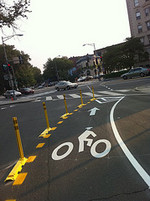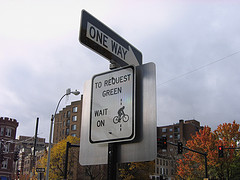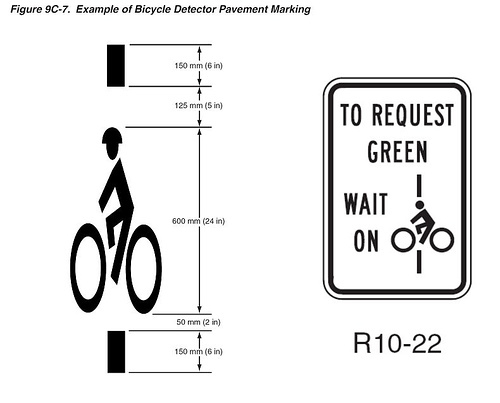DDOT to clarify where to wait for New Hampshire bike signal

Photo by vincentgallegos on Flickr.
Last week, DDOT opened new contra-flow lanes on New Hampshire Avenue for cyclists. But several bikers have reported not knowing where to wait at the intersection with 16th Street in order to trip the bike signal.
Cyclists are supposed to wait on the chevrons immediately behind the stop line, but there is no information telling them to do so. DDOT has plans to make this clear.
The Manual on Uniform Traffic Control Devices, published by the Federal Highway Administration, lays out standards for signs and roadway markings. And it happens to include guidance on this subject.
Bicycle detector markings and signage as recommended by the MUTCD (pictured below) are typically used to denote optimal cyclist positioning when over a vehicular signal actuator. However, these symbols &mdash which are recognized by many American cyclists &mdash can also be used on bike-only facilities.
DDOT plans to install new signs similar to those recommended by the MUTCD tomorrow.
New signage is an excellent step to improving the intersection. But DDOT should consider replacing the chevrons. These markings could be interpreted as arrows pointing the wrong way. Instead, the well-known, standard symbol used in other American cities should be painted on the roadway.


Left: Bike signal actuator sign, Brookline, MA. Photo by author.
Right: Bike signal actuator pavement marking, Portland, OR. Photo by gregraisman on Flickr.
This facility is a huge improvement for cyclists in the area and a great addition to DC’s bike network. DDOT is making great strides toward sustainability and livability, and I applaud them for it.

